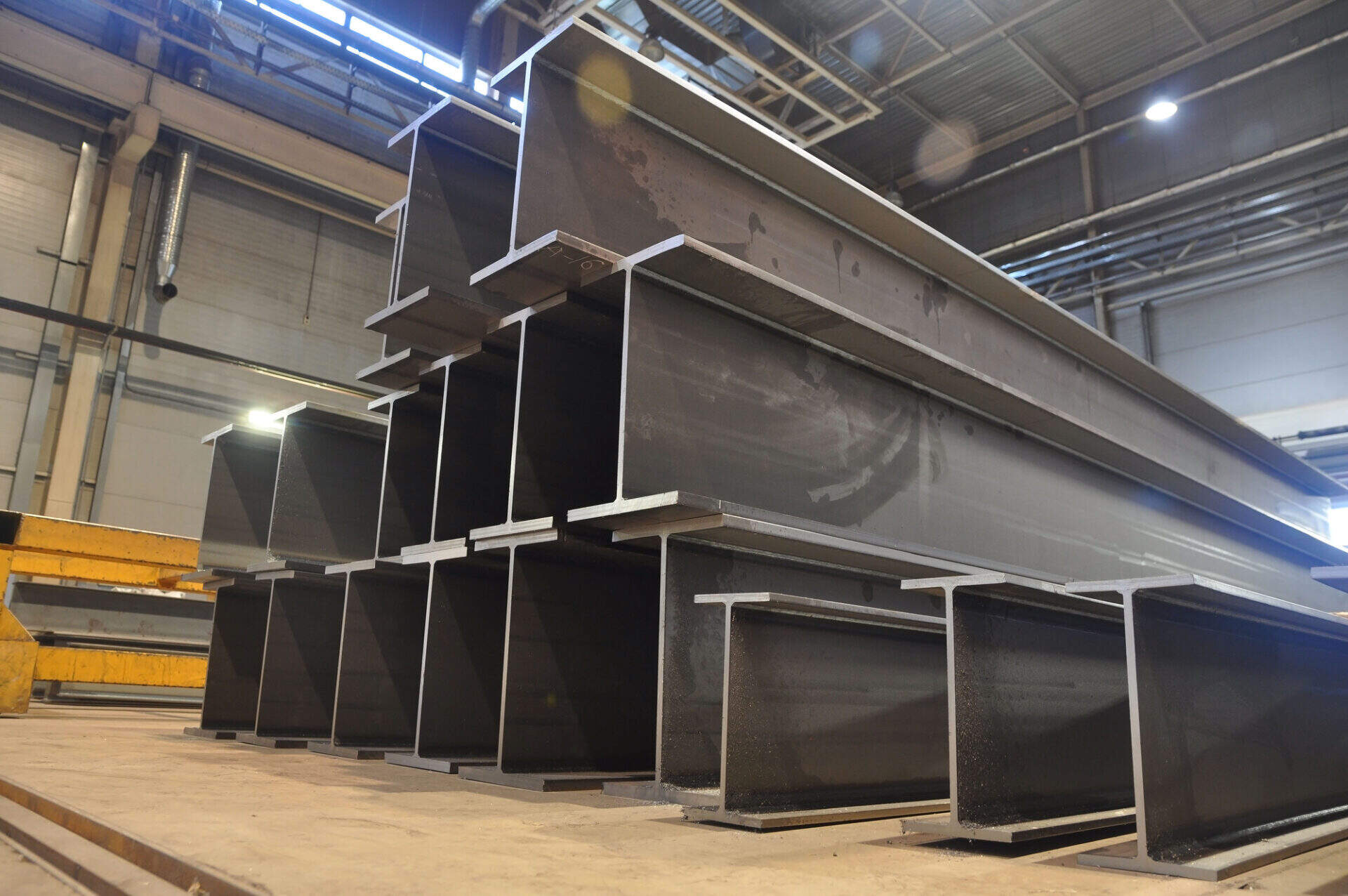How to Select the Right Steel Beam for Heavy Load Applications
Steel has long been one of the most reliable materials in construction, particularly for projects that require strength, durability, and the ability to withstand heavy loads. Among the many structural components available, the steel beam remains a cornerstone in supporting large spans, carrying immense weight, and ensuring the stability of modern structures. From skyscrapers and industrial warehouses to bridges and heavy machinery platforms, the choice of the right steel beam determines the safety and longevity of the project.
Selecting a steel beam for heavy load applications is not a task to be taken lightly. With different shapes, grades, and sizes available, engineers and builders must carefully evaluate several factors before making a decision. This article provides an in-depth guide on how to select the right steel beam, what considerations are most important, and why precision in this choice directly impacts performance, cost, and safety.
Understanding the Function of a Steel Beam
A steel beam is a structural element designed to resist loads applied laterally to the beam’s axis. The main role of a steel beam is to transfer loads from the structure above to vertical supports, such as columns or foundations. In heavy load applications, these beams are subjected to bending, shear forces, and sometimes torsion.
The efficiency of a steel beam lies in its ability to handle compressive and tensile stresses. The top flange of the beam resists compression, while the bottom flange resists tension. This distribution of stress makes steel beams highly efficient in supporting large loads over extended spans, which is why they are widely used in demanding construction projects.
Types of Steel Beams
When selecting the right steel beam, it is essential to understand the different types available. Each type has unique characteristics that make it suitable for specific applications.
I-Beams or H-Beams
Often called universal beams, I-beams and H-beams are the most common steel beams used in heavy load applications. They are characterized by their flanges connected by a central web, forming the shape of the letter "I" or "H". H-beams generally have wider flanges and thicker webs, making them more suitable for extremely heavy loads.
Wide Flange Beams
Wide flange beams resemble H-beams but with greater flexibility in dimensions. Their design offers excellent strength and load distribution, making them ideal for bridges, high-rise buildings, and industrial facilities.
T-Beams
T-beams are cut from I-beams and feature a single flange. They are often used in conjunction with reinforced concrete slabs to provide extra strength without the need for full I-beams.
Channel Beams
C-shaped channel beams are lighter and generally used for secondary support. While not ideal for the heaviest loads, they are useful in structural framing and smaller load-bearing applications.
Box Beams
Also called hollow structural sections, box beams are rectangular or square in shape. Their closed design provides torsional strength, making them suitable for structures requiring resistance to twisting.

Factors to Consider When Selecting a Steel Beam
Choosing the right steel beam involves a combination of engineering analysis, safety considerations, and economic evaluation.
Load Requirements
The first and most critical factor is the load requirement. Engineers must calculate both the dead load (weight of the structure itself) and the live load (occupants, vehicles, equipment, or environmental forces like wind and snow). Heavy load applications, such as bridges or industrial floors, require beams capable of withstanding extreme forces without deformation.
Load calculations involve determining bending moments, shear forces, and deflection limits. A beam that is too small may fail under stress, while one that is oversized may unnecessarily increase material costs.
Span Length
The span length between supports is another key factor. Longer spans require stronger beams with higher moment capacities to prevent sagging or collapse. For example, a short-span warehouse may effectively use I-beams, while a long-span bridge might require box beams or trusses for adequate strength.
Material Grade
Steel beams are produced in different grades, each with specific yield strength and tensile properties. Higher-grade steel can carry heavier loads but is also more expensive. For heavy load applications, common grades include ASTM A36, ASTM A992, and high-strength low-alloy steels. The choice depends on balancing performance requirements with budget constraints.
Beam Size and Shape
The dimensions of the steel beam, including flange width, web thickness, and depth, directly affect load-bearing capacity. Deeper beams can span longer distances, while thicker flanges improve bending resistance. Engineers must analyze structural drawings to select the beam size that offers optimal efficiency.
Deflection and Vibration Control
Even if a steel beam does not fail under load, excessive deflection or vibration can compromise structural integrity and comfort. For example, in office buildings, excessive floor vibrations caused by undersized beams can affect occupant comfort. Therefore, deflection criteria are critical when choosing beams for both safety and usability.
Environmental Conditions
Environmental factors also influence the choice of steel beam. In coastal areas with high humidity and salt exposure, corrosion-resistant coatings or galvanized steel may be necessary. In areas prone to earthquakes, beams must provide both strength and ductility to absorb seismic forces without brittle failure.
Cost and Availability
While safety and performance are paramount, cost cannot be ignored. Engineers must choose beams that meet requirements without exceeding budget limitations. Availability is also a practical factor—certain sizes or grades of beams may not be easily sourced in specific regions, leading to delays in construction.
Structural Analysis and Engineering Tools
Selecting the right steel beam is not a matter of guesswork. Structural analysis tools and software allow engineers to model loads, spans, and stresses to determine the most appropriate beam. Finite element analysis and computer-aided design provide detailed insights into how beams will perform under specific conditions.
Engineering standards and building codes provide guidelines for minimum beam sizes, deflection limits, and safety factors. Following these standards ensures compliance with regulations and avoids legal liabilities.
Practical Applications of Steel Beams in Heavy Load Structures
Steel beams are used across industries wherever heavy loads are a concern.
In bridges, steel beams must withstand not only static loads but also dynamic forces from traffic. Wide flange beams or box beams are common in these applications.
In industrial buildings, beams support cranes, machinery, and storage racks, often requiring reinforced I-beams or H-beams.
In high-rise buildings, beams carry both vertical and lateral loads, forming the framework for stability against wind and seismic activity.
In marine and offshore structures, beams must handle extreme environmental forces, making corrosion resistance as important as strength.
Common Mistakes to Avoid When Selecting Steel Beams
One common mistake is underestimating live loads, especially in spaces with heavy equipment or unexpected occupancy. Another is ignoring deflection criteria, leading to functional problems even if structural failure does not occur. Using the wrong grade of steel to cut costs can also result in premature wear or failure.
Another error is neglecting the importance of proper connections. Even the strongest steel beam is only as effective as the joints and bolts that secure it. Poor connections compromise the entire system.
The Role of Maintenance in Long-Term Performance
Selecting the right steel beam is only part of ensuring safety. Proper maintenance extends the lifespan of beams in heavy load applications. Regular inspections for corrosion, cracks, or fatigue are essential. Protective coatings, painting, and galvanization help prevent rust. In high-load environments such as factories, beams should also be checked for deformation caused by constant heavy use.
Advances in Steel Beam Technology
Modern innovations are improving the performance of steel beams. High-strength alloys allow for slimmer designs without compromising load capacity. Composite beams, which combine steel with reinforced concrete, offer improved strength and fire resistance. Computerized manufacturing ensures precise tolerances, enhancing overall reliability.
Smart monitoring systems are also being introduced. Sensors embedded in beams can measure stress, strain, and vibration in real time, alerting engineers to potential issues before they become critical. This technology promises a future where structural safety is continuously monitored and maintained.
Conclusion
Selecting the right steel beam for heavy load applications requires careful analysis of load requirements, span length, material grade, beam size, deflection control, and environmental conditions. The correct choice ensures structural safety, cost efficiency, and long-term durability. Mistakes in selection can compromise both safety and performance, making professional engineering analysis essential.
Steel beams remain the backbone of heavy construction, from bridges and skyscrapers to industrial plants and marine structures. By choosing the right type and maintaining it properly, builders and engineers can ensure that their projects stand strong against both immediate loads and long-term challenges.
FAQ
What is the most common steel beam used for heavy load applications?
The I-beam or H-beam is the most common due to its high load-bearing efficiency and availability.
How do I determine the right size of a steel beam?
Engineers calculate load requirements, span length, and deflection limits using structural analysis tools to determine the appropriate size.
Are high-strength steel beams always better?
Not always. While they provide higher load capacity, they are more expensive. The choice depends on balancing cost and performance needs.
Do environmental conditions affect beam selection?
Yes, corrosive environments require protective coatings or galvanized steel, while seismic zones need beams with ductility for earthquake resistance.
Can steel beams be customized for specific projects?
Yes, manufacturers can produce custom beams in specific sizes, shapes, and grades to meet unique project requirements.
Table of Contents
- How to Select the Right Steel Beam for Heavy Load Applications
- Understanding the Function of a Steel Beam
- Types of Steel Beams
- Factors to Consider When Selecting a Steel Beam
- Structural Analysis and Engineering Tools
- Practical Applications of Steel Beams in Heavy Load Structures
- Common Mistakes to Avoid When Selecting Steel Beams
- The Role of Maintenance in Long-Term Performance
- Advances in Steel Beam Technology
- Conclusion
- FAQ






